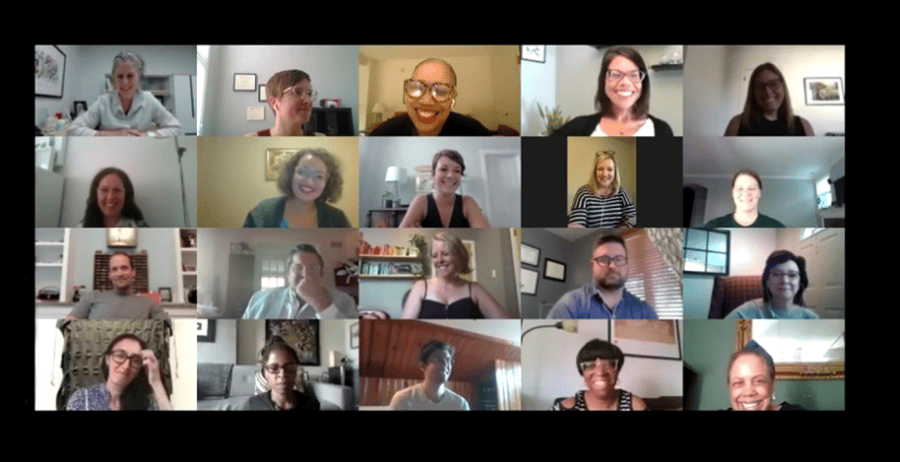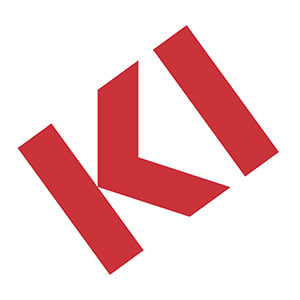The Culture of Community

The 2020 Community as Strategy event series, presented by KI and IIDA, continued virtually in “Chicago,” bringing together local designers and professionals to discuss the important roles that brand and culture play in the creation of meaningful corporate community.
What does community mean when being together physically is challenged, and what is the significance of brand and culture in the built environment if we’re not there? These were the questions posed by moderator Cheryl S. Durst, Hon. FIIDA, executive vice president and CEO of IIDA, during a recent Community as Strategy virtual webinar. For this virtual panel, Durst spoke with four women—Anne Gibson, Jennifer Leighty, Stephanie Peters and Mandy Tahvonen—working in design and strategy, with their employees, customers, and clients on the continued importance of maintaining brand and ensuring that corporate communities remain strong and healthy enough to help and uplift others.

We often explore brand and culture in tandem when discussing the communities found within organizations and the external communities those organizations come into contact with. For Anne Gibson, principal at Gensler, “brand and culture are things that [designers] have been talking to their clients about for decades. They are how [organizations] differentiate themselves in the market but also in the physical space.”
Simply put, brand and culture are synonymous with mission and purpose. Corporate branding can shape and define a company’s overall culture, not only within workplace structures, but in its relationship to customers, consumers, and other external groups. So what will brand and culture mean to us in the upcoming months and years now that we are looking at community roles differently?
Engaging External Communities
For a heritage brand like Walgreens, understanding and re-enforcing who they are fundamentally as a company is critical during times of unpredictability. For many communities across the United States, Walgreens is both an iconic corporate entity and a local necessity, providing vital products and services. Because Walgreens is so visible, it is necessary that their corporate culture reflects the experiences of the many communities Walgreens locations exist within.
“Between COVID-19 and ongoing racial injustice, Walgreens has been reaching into our communities like never before,” says Stephanie Peters, director of guest and team member services for Walgreens.
In the early most unpredictable stages of the civil unrest that has been occurring nationwide, some Walgreens employees were making home deliveries of important prescription medications to local customers whose travel and access was affected. “In instances of looting, we had community members and neighbors picking up garbage and helping us clean up and rebuild after the fact,” Peters explains. “Regardless of what was going on, we have a duty to our customers and it’s an empowering moment when you see the interloping of the organization and the community.”
Internally, the Walgreens Headquarters staff are evolving what it means to be a community and what internal community will mean for them going forward. According to Peters, their definitions of “teamwork” and “team” have changed dramatically over the past six months: “It is no longer about who you’re sitting with, nor is it about hierarchies or specific roles. Rather, teamwork is now about the function of your work and who can get it done quickly and efficiently,” she says. “I have never seen an organization work together like this before; our people are really doing collaborative work.”
From Space to Place
As pertaining to brand, culture and community, where does the physical space fit in, especially considering that it is currently being used less than ever? Organizations often rely on the built environment to communicate their brands to external communities and stakeholders; for Walgreens pharmacies, for example, the relationship between customers and their Walgreens locations is vital and hyperlocal.
Additionally, a physical office space can assist in bringing employees together under a common cause and affirming who they are and what they are striving toward. Since the start of the COVID-19 pandemic, it has become clear that much of the desk work can be done from home. “We need our workplaces to be more than just workplaces—they need to truly communicate a sense of purpose,” says Jennifer Leighty, manager of guest experience at Walgreens. Now more than ever, designers must think about why employees would want to come back to work in a physical space—which will look different than what it used to and will revolve around human connection.
The physical space is also often a driver in the connection between organizations and external communities. A space isn’t just a space—it becomes a “place” when culture, brand and meaning is present in its conception and utilization. Designers, architects and developers have already been thinking about how to best involve various communities early on in a design process so that their needs are properly represented in a space, and now, this has become a crucial piece of the puzzle as we move forward with the rebirth of the built environment.
Gibson looks to Gensler’s recently completed student center at Columbia College as an important example of how designers can help an organization align its goals with the community it is serving. The building was designed to be a centralized meeting space for students—a kind of home base that was lacking within Columbia’s wide-spread vertical campus in the Loop and South Loop neighborhoods of Chicago. “The building is for the students and was created through a series of workshops and charrettes with students and faculty so that [Gensler] could understand what they needed.”
The community space was intentionally designed with a raw and unfinished style, to allow Columbia’s community to mold it into their own and includes many multi-purpose spaces and amenities. “We have to begin expanding our definition of ‘design’ to include the design of services, programs and activities,” says Mandy Tahvenon, managing director of Relish Works. “We have to really think about our traditional understanding of design and ask ourselves ‘what else is happening in this space?’ We have to remember that within any space, there is context and community we don’t see.”
Click to watch the full Community as Strategy webinar.
KI and IIDA will continue to explore how design and community are shaped during this time of transition. We’ll extend these conversations to design communities across the country and build on this knowledge of Community as Strategy—upcoming virtual community sessions will be held in San Francisco, Atlanta, Boston and Los Angeles.
Subscribe
Stay up to date with the latest trends and more.
